| "Descrizione" by Whiz35 (11840 pt) | 2023-Jul-15 09:46 |
Review Consensus: 10 Rating: 10 Number of users: 1
| Evaluation | N. Experts | Evaluation | N. Experts |
|---|---|---|---|
| 1 | 6 | ||
| 2 | 7 | ||
| 3 | 8 | ||
| 4 | 9 | ||
| 5 | 10 |
Polyvinylpyrrolidone vinyl acetate copolymer or PVP/VA Copolymer is a chemical compound, copolymer or copolymers that can be random or linear and are produced synthetically by the process of 'radical polymerisation' whereby a conversion of double bonds present in the monomer unit takes place, transforming them into saturated ones. This is the product of conventional radical copolymerisation of N-vinyl-2-pyrrolidone and vinyl acetate in a propan-2-ol solution with initiators.
The name describes the structure of the molecule:
- "Polyvinylpyrrolidone" (PVP) refers to a polymer derived from the monomer N-vinylpyrrolidone. It's a water-soluble polymer used in a variety of applications, including as a binder in pharmaceutical tablets and a thickener in toothpaste.
- "Vinyl acetate" is a monomer that can be polymerized to form polyvinyl acetate, a component of many adhesives and paints.
- "Copolymer" refers to a polymer that is made from two or more different types of monomers. In this case, the copolymer is made from the monomers of vinylpyrrolidone and vinyl acetate.
The ratios of vinyl acetate to vinylpyrrolidone. can vary between 30/70 and 70/30. Polymers with 30%, 50%, 60% and 70% vinylpyrrolidone content are produced in isopropanol and ethanol. Polyvinylpyrrolidone vinylacetate copolymers with a vinylpyrrolidone content of 60 and 70 per cent are either 50 per cent aqueous solutions or solids.
The synthesis process takes place in different steps:
- The vinylpyrrolidone and vinyl acetate monomers are mixed together in a reaction vessel.
- A free radical initiator is added to the mixture. This initiator starts the polymerization process by donating a free radical to the monomers.
- The free radical on the monomer can react with the double bond of another monomer, forming a bond between them and creating a larger molecule with a free radical. This process continues, with the growing polymer chain reacting with more monomers.
- The reaction continues until all the monomers have been incorporated into the polymer chains, forming the polyvinylpyrrolidone-vinyl acetate copolymer.
It appears as a white to yellowish-white powder or flakes, with an average particle size of 50-130 μm freely soluble in water, ethanol, ethylene chloride and ether, or as a transparent liquid soluble in water, ethanol, isopropanol.
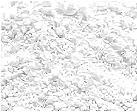
What it is used for and where
Binding/coating agent
Food
In 2009, an application was submitted to the European Commission for authorisation of polyvinylpyrrolidone vinylacetate in solid food supplements: 'Food supplements in solid form, including capsules, tablets and the like, except chewing tablets. Polyvinylpyrrolidone vinylacetate copolymer improves the strength and adhesion of the coating film and increases the rate of application.
It is labelled with the number E1208 in the European food additives list as a coating agent.
Medical and Pharmaceuticals
Polyvinylpyrrolidone vinylacetate copolymer is usually associated with low concentrations of active pharmaceutical ingredients and the mechanism of drug release is controlled by the polymer (1).
Safety
According to the opinion of Commission Regulation (EU) No 264/2014 of 14 March 2014, polyvinylpyrrolidone vinyl acetate copolymer as a binding/coating agent in solid food supplements is not expected to present safety concerns (2).
The most relevant studies on this ingredient have been selected with a summary of their contents:
Typical commercial product characteristics PVP/VA Copolymer
| Appearance | White powder |
| Nitrogen content | 7,0-8,0 % |
| pH | 3,0 – 7,0 |
| Vinyl acetate | 42,0 % |
| Free vinyl acetate | 5 mg/kg |
| Total ash | 0,1 % |
| Free N-vinylpyrrolidone | 5 mg/kg |
| Hydrazine | 0,8 mg/kg |
| Peroxide | 400 mg/kg |
| Propan-2-ol | 150 mg/kg |
| As | 3 mg/kg |
| Pb | 2 mg/kg |
| Mercury | 1 mg/kg |
| Cadmium | 1 mg/kg |
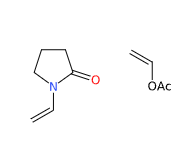 | 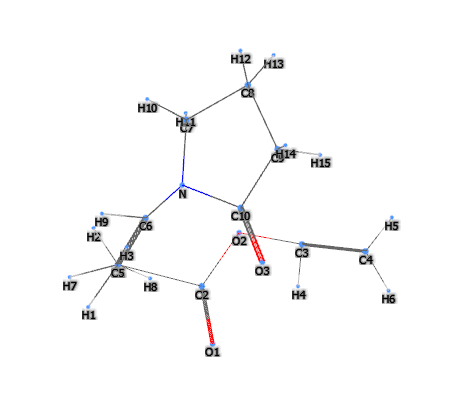 |
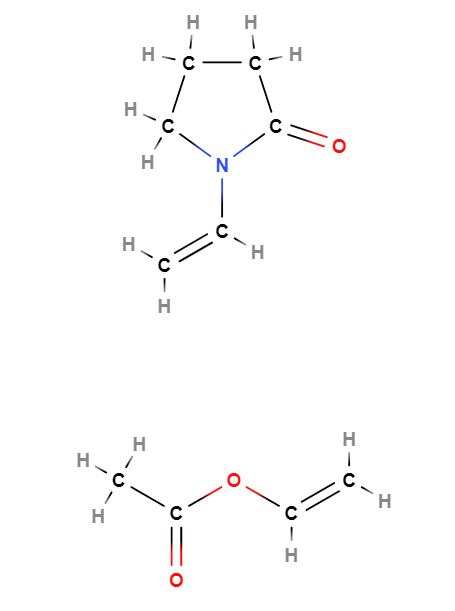 | 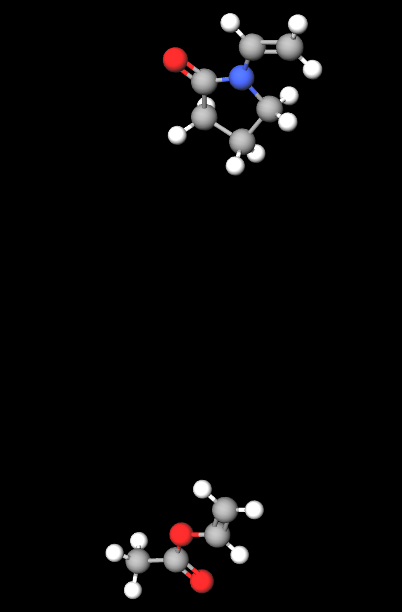 |
- Molecular Formula (C6H9NO)n(C4H6O2)m C10H15NO3
- Viscosity average molecular weight Between 26 000 and 46 000 g/mol
- CAS 25086-89-9
- UNII
- EC Number 607-540-1
- DSSTox Substance ID DTXSID80897056
- IUPAC ethenyl acetate;1-ethenylpyrrolidin-2-one
- InChl=1S/C6H9NO.C4H6O2/c1-2-7-5-3-4-6(7)8;1-3-6-4(2)5/h2H,1,3-5H2;3H,1H2,2H3
- InChl Key FYUWIEKAVLOHSE-UHFFFAOYSA-N
- SMILES CC(=O)OC=C.C=CN1CCCC1=O
- MDL number MFCD00134018
- NACRES NA.23
- RTECS AH3539000
- NSC 114026 114025 114024 114023
Synonyms
- Vinylpyrrolidone/ vinylacetate copolymers
- Poly(1-vinylpyrrolidone-co-vinyl acetate)
- kolima35
- gaf-s630
- Cholest-8(14)-ene-3,6-diyl diacetate
References________________________________________________________________________
(1) Ritters L, Tian Y, Reichl S. Spray-Dried Paracetamol/Polyvinylpyrrolidone Amorphous Solid Dispersions: Part I-Stability of Powders and Tablets. Pharmaceutics. 2021 Nov 16;13(11):1938. doi: 10.3390/pharmaceutics13111938.
(2) L_2014076IT.01002201.xml (europa.eu)
| Evaluate |

